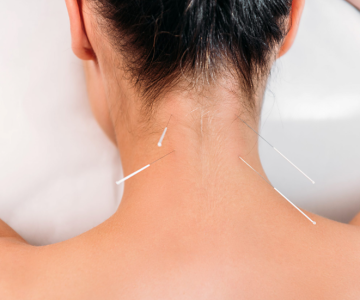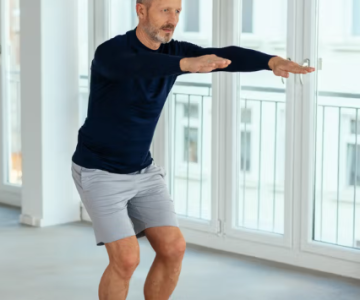Running is one of the most popular forms of exercise, but it also comes with its fair share of injuries. Depending on the study, running injuries can affect anywhere from 19% to 92% of runners. Of those injured, between 30% to 90% have to either reduce or stop running altogether due to their injuries. The truth is, running injuries can take the fun out of your favorite sport, but understanding the causes and taking preventative measures can help you stay on track.
What Causes Running Injuries?
Most running injuries are overuse injuries, accounting for roughly 80% of all cases. This happens because many runners push their bodies too hard—running too much, too soon, without giving themselves enough recovery time. If you’re experiencing pain for more than seven to ten days, it’s a good idea to consult with a physical therapist to prevent the issue from escalating. The longer you wait, the more difficult it can be to recover.
The repetitive motion of running can also contribute to injuries. Runners strike the ground anywhere between 800 and 2,000 times per mile, with forces that are 1.5 to 5 times their body weight. Interestingly, slower runners tend to take more steps per mile, which can lead to increased load and strain over time. However, regardless of pace, the constant pounding from running is hard on the body.
Injuries are multifactorial, but some common risk factors include being a new runner (with less than three years of experience), previous injuries, using orthotics, running on hard surfaces like concrete, and overtraining. Additionally, factors like age, gender, and running a marathon also increase the risk of injury. Women, for example, often experience different risk factors due to their unique physiology.
In my experience, I see patterns among injured runners. Many have not been consistent with their training or have made sudden changes to their routine that seem harmless but are actually too much for their bodies to handle. I’ve also noticed poor posture, weak hips, core instability, and tight muscles as common culprits behind running injuries.
Where Do Running Injuries Occur?
The knee is the most commonly injured body part among runners, with nearly half of all running injuries affecting this area. Other frequent injuries involve the lower legs, feet, ankles, hips, pelvis, and lower back.
Common Running Injuries and How to Treat Them
While there are numerous types of running injuries, I’ve narrowed it down to the four most common ones I treat in my clinic:
1. Iliotibial Band (ITB) Syndrome
What is it? ITB syndrome occurs when the iliotibial band, a thick band of tissue on the outside of the leg, becomes irritated either at the hip or at the knee.
How does it present? Pain typically appears on the outside of the knee and hip, often accompanied by swelling, difficulty bending the knee, limping, and sharp pain during ground contact while running.
Risk factors: ITB syndrome is often caused by overuse, sudden increases in mileage, running downhill, or poor hip strength. Pelvic misalignment can also contribute to the issue.
Treatment: Foam rolling and massage therapy can help relieve some of the tension in the ITB and surrounding muscles. Strengthening the glutes and hips through targeted exercises is key to preventing a recurrence. If the issue is not addressed at the source, it will continue to persist.
2. Patellofemoral Pain Syndrome (PFPS)
What is it? PFPS, also known as runner’s knee, involves pain in the front of the knee, often due to excessive contact between the patella (kneecap) and the femur.
How does it present? Pain and discomfort occur in the front of the knee, especially during activities like sitting for long periods, descending stairs, or squatting. There may also be swelling and a clicking sound in the knee.
Risk factors: Weak hips, pelvic misalignment, and improper leg control during running can contribute to PFPS. Excessive knee valgus (the knees collapsing inward) and being female are also risk factors.
Treatment: Strengthening the hips, glutes, and quadriceps is essential. Working on balance and stability through single-leg exercises can improve knee control. Foam rolling and ice can provide temporary relief.
3. Plantar Fasciitis (Plantar Fasciosis)
What is it? Plantar fasciitis involves inflammation of the plantar fascia, the tissue along the bottom of the foot. It often develops due to overuse or abnormal foot mechanics.
How does it present? Pain is most noticeable in the heel, particularly in the morning or after long periods of sitting. The first few steps of running or walking can be quite painful, and there may be increased tightness in the calves.
Risk factors: Overtraining, wearing old shoes, and running with poor foot mechanics can all contribute. A low arch or high-impact activities like running on hard surfaces also increase the risk.
Treatment: Addressing the entire kinetic chain is crucial. Stretching the calves and improving hip and core strength can help correct foot mechanics. Strengthening the arch and working on single-leg balance is also beneficial.
4. Achilles Tendonitis (Tendonosis)
What is it? Achilles tendonitis is the degeneration of the Achilles tendon due to chronic overuse.
How does it present? Pain and swelling at the back of the heel, especially during calf muscle use, such as when doing heel raises. There may be stiffness, a noticeable bump on the tendon, and pain during push-off when running.
Risk factors: A sudden increase in training intensity, running on hills, or poor footwear can exacerbate Achilles issues. Older age and reduced flexibility in the calves also contribute to the problem.
Treatment: Eccentric strengthening (slowly lowering the heel during heel raises) is the most effective treatment for Achilles tendonitis. Strengthening the calf and foot muscles, as well as improving flexibility in the calves and plantar fascia, can reduce strain on the tendon.
Final Thoughts
If you’re dealing with a running injury, it’s important to address it as soon as possible. The earlier you seek help, the quicker you can get back to running pain-free. If you’re not seeing improvement, don’t hesitate to consult a physical therapist. In many places, such as Georgia, you can see a PT for up to eight visits without needing a doctor’s referral. A good physical therapist will analyze your running form and make recommendations to reduce pain and prevent future injuries.
Remember, running injuries are preventable with the right approach. Stay consistent with your training, pay attention to your body, and don’t ignore pain. By taking care of your body, you’ll be able to enjoy running for years to come.





